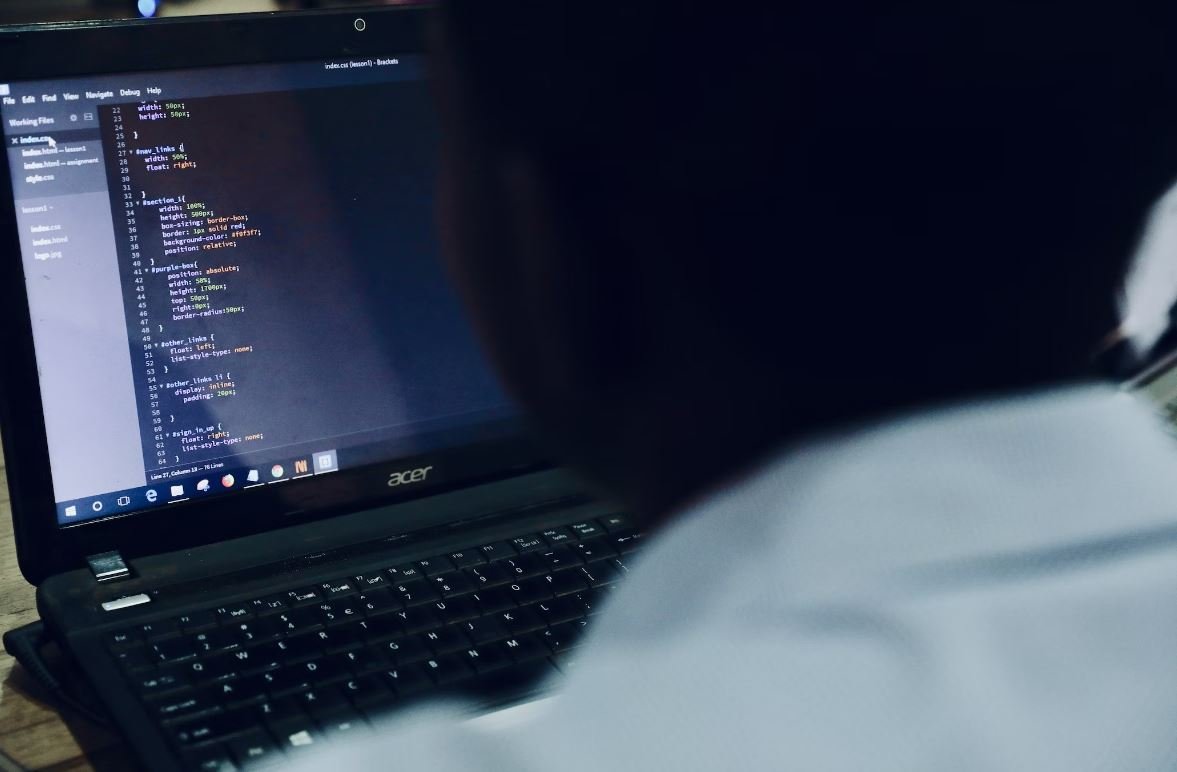Deep Fake Your Voice
With the advancement of artificial intelligence and machine learning, technology has made it possible to create convincing fake videos and images known as deep fakes. But did you know that you can also deep fake your voice? Voice deep fakes use sophisticated algorithms to replicate someone’s voice and make it sound like they are saying things they never did. This technology has both positive and negative implications, as it can be used for entertainment purposes or potentially be exploited for malicious activities. In this article, we will explore how voice deep fakes work and discuss their impact on society.
Key Takeaways
- Voice deep fakes use advanced algorithms to replicate and manipulate someone’s voice.
- They have diverse applications such as entertainment, dubbing, and voice acting.
- Voice deep fakes raise concerns about misrepresentation, identity theft, and misinformation.
- Regulation and awareness are necessary to mitigate the potential negative impact of voice deep fakes.
Understanding Voice Deep Fakes
Creating a voice deep fake involves training a machine learning model on a large dataset of someone’s voice recordings. Neural networks analyze the audio data to understand the unique characteristics, pronunciation, and intonation of the target speaker’s voice. By utilizing this knowledge, the model can generate new audio that closely resembles the target’s voice, even if the content is different. *Voice deep fakes rely on complex algorithms to capture and reproduce the nuances of speech, making it challenging to detect the authenticity of audio recordings.
The Potential Applications of Voice Deep Fakes
Voice deep fakes have an array of applications, both positive and negative:
- Entertainment industry: Actors or voiceover artists can mimic the voices of historical figures or deceased celebrities in movies or audiobooks.
- Voice dubbing: Foreign films or TV shows can be dubbed more convincingly by using an actor’s voice deep fake to match the original actor’s voice.
- Accessibility: Voice deep fakes can be used by individuals with speech impairments to generate a voice that sounds like their own.
- Prank calls and impersonation: People with malicious intent can use voice deep fakes to impersonate someone else over the phone or leave misleading voicemails.
Challenges and Concerns
Voice deep fakes pose several challenges and concerns:
- Identity theft: Malicious actors can use voice deep fakes to deceive individuals and gain unauthorized access to personal information.
- Misinformation: False information or statements can be spread more easily using voice deep fakes, which may have detrimental consequences.
- Reputation damage: Voice deep fakes can ruin someone’s reputation by making it appear that they said something inappropriate or offensive.
*It is essential to raise awareness and develop detection techniques to combat the misuse of voice deep fakes.
Data Privacy and Ethics
Creating voice deep fakes raises ethical concerns regarding consent and privacy. Permission from the individuals whose voices are being replicated should be obtained, as voice data can be highly personal and sensitive. However, ensuring compliance and establishing clear guidelines can be challenging in a fast-paced technological landscape.
Data Points: Voice Deep Fakes
| Voices used for training | Amount of data required |
|---|---|
| Several hours | Tens of gigabytes |
Regulating Voice Deep Fakes
With the growing concerns surrounding deep fakes, including voice deep fakes, there is increasing demand for regulations to combat potential misuse. The legal landscape must adapt to address the challenges posed by this technology, striking a balance between freedom of expression and protecting individuals from harm. Awareness campaigns and educational initiatives are also necessary to enhance public understanding of voice deep fakes and their potential risks.
Conclusion
Voice deep fakes have the capability to revolutionize various industries, but they also raise significant concerns. Responsible usage, regulation, and awareness are crucial in harnessing the potential benefits while mitigating the potential dangers. By understanding the technology and its implications, we can take necessary precautions to minimize the negative effects and ensure that voice deep fakes are used ethically and responsibly.

Common Misconceptions
Misconception 1: Deep Fake Your Voice is Only Used for Harmful Purposes
One common misconception about Deep Fake Your Voice technology is that it is exclusively used for harmful purposes, such as spreading disinformation or creating fake audio recordings for manipulation. However, while it is true that the technology can be misused, it also has numerous positive applications.
- Deep Fake Your Voice can be used in film and animation to create realistic voiceovers for characters, saving time and resources.
- It can assist individuals with speech impairments, allowing them to communicate more easily.
- Artists and musicians can utilize Deep Fake Your Voice technology to experiment with different vocal styles and create unique compositions.
Misconception 2: Deep Fake Your Voice is Always Easy to Detect
Another misconception is that it is always easy to detect when a voice has been deep-faked. While there are often telltale signs that can raise suspicion, the technology has advanced significantly and can produce highly convincing results that are difficult to differentiate from real recordings.
- Advanced deep-learning algorithms have improved the quality and accuracy of deep-faked voices, making them harder to spot.
- Factors such as background noise, compression artifacts, and audio quality can further obscure the detection of deep-faked voices.
- The rapid advancement of the technology also means that detection methods need to continuously evolve to keep up.
Misconception 3: Deep Fake Your Voice is Illegal Everywhere
Some people assume that Deep Fake Your Voice technology is illegal worldwide due to its potential for misuse and fraudulent activities. However, the legality of using deep-faked voices varies across different jurisdictions and is dependent on the specific context and intentions behind their use.
- Some countries have specific laws or regulations regarding the use of deep-faked voices, especially if used for deceptive purposes.
- The legality can differ based on the intended use, such as entertainment, research, or harmful activities.
- Legal frameworks regarding Deep Fake Your Voice are still evolving and can vary greatly between jurisdictions.
Misconception 4: Deep Fake Your Voice Is Inherently Unethical
While the misuse of Deep Fake Your Voice technology can indeed be unethical, it is important to recognize that the technology itself is not inherently unethical. The ethical implications of using deep-faked voices depend on the intent and context of their use, as well as the consent and impact on others.
- Using deep-faked voices in entertainment or artistic works with proper consent and attribution is not inherently unethical.
- The technology can have important applications in industries such as voice acting, dubbing, or virtual assistants.
- Clear guidelines and ethical frameworks can help manage the responsible use of Deep Fake Your Voice technology.
Misconception 5: Deep Fake Your Voice is Perfect and Cannot Be Detected
Contrary to popular belief, Deep Fake Your Voice technology is not flawless and can often be detected with careful analysis and advanced tools. While it is continuously improving, there are still limitations and challenges in creating completely undetectable deep-faked voices.
- Researchers and experts are actively developing advanced methods to detect deep-faked voices.
- Analysis of speech patterns, subtle artifacts, and anomalies can provide valuable clues for identifying deep-faked voices.
- Combining multiple detection methods and expertise from various fields is crucial for enhancing detection capabilities.

Companies Utilizing Deep Fake Voice Technology
Many notable companies are investing in deep fake voice technology to enhance their services and products. The following table highlights some prominent companies that are utilizing this innovative technology:
| Company | Industry | Applications |
|---|---|---|
| Adobe | Software | Enhanced video editing, dubbed audio, and voice manipulation |
| Technology | Virtual assistants, speech synthesis, and call-center automation | |
| Amazon | E-commerce | Personalized shopping experiences and voice-enabled devices |
| Microsoft | Technology | Chatbots, customer service automation, and video game characters |
| IBM | Technology | Automated voice assistants, speech recognition, and language translation |
Impact of Deep Fake Voice on Personal Privacy
Deep fake voice technology raises concerns regarding personal privacy as it becomes increasingly difficult to distinguish between real and fabricated audio. The table below presents some potential implications of this technology on personal privacy:
| Privacy Concern | Description |
|---|---|
| Voice Phishing | Criminals can use deep fake voices to impersonate individuals and deceive others into sharing sensitive information. |
| Audio Manipulation | Deep fake voice technology can be used to alter audio recordings, potentially leading to false accusations or malicious intent. |
| Identity Theft | By replicating someone’s voice, individuals may be at a higher risk of having their identity stolen or misused for fraudulent purposes. |
| Misinformation | Deep fake voices can be utilized to spread false information, exacerbating the issue of disinformation in the digital age. |
Applications of Deep Fake Voice in Entertainment
Deep fake voice technology has various applications in the entertainment industry. The following table showcases some uses of this technology in entertainment:
| Application | Description |
|---|---|
| Movie Dubbing | Deep fake voice technology allows for seamless dubbing of movies, enabling accurate lip-syncing with the characters’ native language. |
| Celebrity Voice-overs | With deep fake voices, celebrities can provide voice-overs for characters in animation, video games, or audiobooks. |
| Virtual Singers | Artificial voices generated through deep fake technology enable virtual singers to perform in concerts and music productions. |
| Fictional Character Voices | Deep fake voice technology allows for realistic voices to be attributed to fictional characters in movies, TV shows, and games. |
Advancements in Deep Fake Voice Technology
Deep fake voice technology is rapidly advancing, resulting in more realistic and convincing audio manipulations. The table below presents some recent advancements in this evolving field:
| Advancement | Description |
|---|---|
| Talking Head Technology | Deep fake voice technology can now synchronize the voice with facial movements, enabling more lifelike representations. |
| Improved Naturalness | The use of machine learning algorithms has enhanced the naturalness and authenticity of generated deep fake voices. |
| Enhanced Voice Conversion | Researchers have developed methods to convert a speaker’s voice into another’s voice while preserving the speech content’s characteristics. |
| Real-Time Voice Transformation | Advancements in real-time deep fake voice technology enable instant voice transformation and manipulation during live conversations. |
Ethical Concerns Surrounding Deep Fake Voice Technology
The rise of deep fake voice technology has raised significant ethical concerns within society. The table below outlines some of these ethical concerns:
| Ethical Concern | Description |
|---|---|
| Consent and Permission | Using someone’s voice without their consent raises issues of privacy, consent, and ownership of personal audio. |
| Misrepresentation | Deep fake voices can lead to misrepresentation, as individuals may be falsely attributed to statements they never made. |
| Impersonation and Deception | Deep fake voices can be used for impersonation, leading to deception and potential harm to individuals or organizations. |
| Audio Authenticity | The ability to fabricate voices challenges the authenticity and integrity of audio evidence in various fields, including law enforcement and journalism. |
The Future of Deep Fake Voice Technology
Deep fake voice technology is poised to become more widespread and accessible, transforming how we perceive and interact with audio content. The table below presents some potential future advancements and impacts of this technology:
| Future Advancement | Potential Impact |
|---|---|
| Enhanced Human-Machine Interactions | More realistic virtual assistant interactions, improving user experience and convenience. |
| Influencer Marketing | Deep fake voices could be utilized by influencers to endorse products or services without their direct involvement. |
| Preserving Dying Languages | Deep fake voice technology can help preserve endangered languages by simulating fluent speakers for educational purposes. |
| Novel Audio Entertainment | Creation of unique audio experiences through deep fake voices, blurring the line between reality and fiction. |
Deep Fake Voice Regulation and Legislation
The emergence of deep fake voice technology has prompted discussions about necessary regulations and legislation to address potential misuse. The following table illustrates some key considerations regarding deep fake voice regulation:
| Consideration | Description |
|---|---|
| Disclosure Requirements | Regulations may require clear disclosure when a deep fake voice is used, ensuring transparency and informed decision-making. |
| Intellectual Property | Legislation must address issues related to the unauthorized use of voice data and the protection of individuals’ voice as an intellectual property. |
| Legal Liability | Establishing legal frameworks to determine liability in cases where deep fake voice technology is used for fraudulent or malicious activities. |
| Consumer Protection | Regulations can be implemented to safeguard consumers from deceptive practices involving deep fake voices in advertisements or customer service interactions. |
Increased Accessibility of Deep Fake Voice Tools
The accessibility of deep fake voice tools is expanding, granting individuals the ability to manipulate audio easily. The following table highlights features and availability of popular deep fake voice applications:
| Application | Features | Availability |
|---|---|---|
| Lyrebird | Custom voice generation, API integration, and multiple language support | Subscription-based service |
| Voicemod | Real-time voice modulation, soundboard integration, and voice effects | Free and premium versions available |
| Resemble AI | High-quality deep fake voices, training models, and text-to-speech conversion | Subscription-based service |
| Descript | Editing and collaboration features, transcription, and voice cloning | Subscription-based service |
In conclusion, deep fake voice technology is revolutionizing various industries while raising ethical and privacy concerns. Companies across different sectors are incorporating this technology, enhancing entertainment experiences and automating numerous tasks. As advancements continue and accessibility increases, regulations are crucial to address potential risks and protect individuals from harmful applications of deep fake voices. The future of deep fake voice technology holds both excitement and responsibility as we navigate its evolving landscape.
Frequently Asked Questions
What is deep faking your voice?
Deep faking your voice refers to the process of manipulating audio recordings to make them sound like they were spoken by someone else. It involves using advanced machine learning techniques to imitate and replicate the voice of another person.
How does deep faking your voice work?
Deep faking your voice typically involves training a neural network on a large dataset of audio recordings from the target speaker. The network then learns the unique characteristics of that person’s voice and can generate new audio samples that sound similar to the target speaker.
Is deep faking your voice legal?
The legality of deep faking your voice varies depending on the jurisdiction and the intended use of the manipulated audio. In some cases, using deep fake voice recordings for fraudulent purposes or to deceive others may be illegal. It is important to understand and comply with the laws and regulations in your specific location.
What are the ethical concerns surrounding deep faking your voice?
Deep faking your voice raises ethical concerns related to privacy, identity theft, and potential misuse of technology. It can be used to impersonate someone else, spread fake information, or manipulate audio evidence. Applying deep fake techniques without the consent or knowledge of others is generally considered unethical.
Can deep faking your voice be detected?
With advancements in deep fake technology, it is becoming increasingly difficult to detect manipulated voice recordings. However, there are ongoing research and development efforts to create tools and techniques that can help identify deep fakes. These detection methods often rely on analyzing subtle artifacts and inconsistencies in the audio signals.
What are some practical applications of deep faking your voice?
Deep faking your voice can have various applications, including entertainment, dubbing, language learning, audiobook narration, voiceover work, and voice assistants. It can also be used in the field of accessibility to help individuals with speech impairments communicate more effectively.
Are there any risks associated with deep faking your voice?
There are certain risks associated with deep faking your voice. One potential risk is the unauthorized use of someone else’s voice without their consent, which can lead to reputational damage or legal consequences. Additionally, if deep fake voice recordings are used for malicious purposes, they can cause harm to individuals or organizations.
What steps can I take to protect myself from deep fake voice attacks?
To protect yourself from potential deep fake voice attacks, it is advisable to be cautious about the privacy and security of your personal audio recordings. Avoid sharing sensitive voice samples or recordings with unknown individuals or unreliable platforms. Stay informed about the latest advancements in deep fake detection technology and use trusted sources whenever possible.
Are there any regulations or guidelines governing the use of deep fake voice technology?
Currently, there are no specific regulations or guidelines that universally govern the use of deep fake voice technology. However, some countries or regions may have laws in place that address certain aspects of deep fake audio, such as privacy, fraud, or defamation. It is recommended to consult the relevant legal authorities or seek legal advice to understand the specific regulations in your jurisdiction.
Can deep faking your voice be used for good?
While deep faking your voice can have negative implications, there are also potential positive use cases. For example, it can be used in voice acting to create more realistic character voices or enable historical figures to “speak.” Furthermore, it can aid individuals with speech disabilities in finding their own voice or preserving their unique vocal characteristics.




